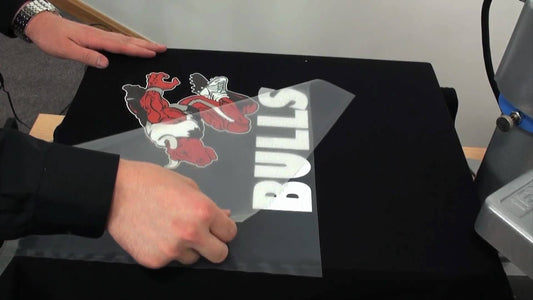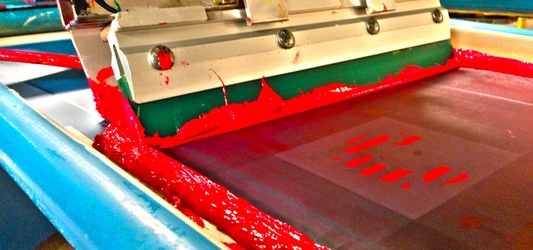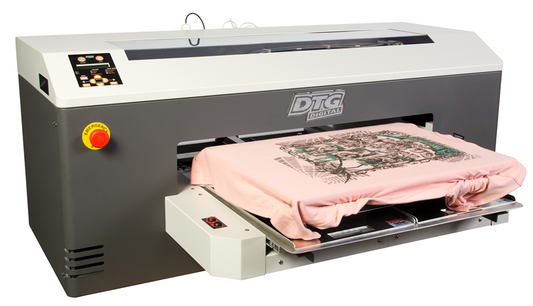The History of Printed T-Shirts. (2015, September 15). Retrieved from https://www.shopworx.com/the-history-of-printed-t-shirts/
The printed T-Shirt. A global icon of pop culture. The foundation of the decorated apparel industry. The epitome of cool casualness. Have you ever wondered where this institution came from?
The roots of decorated apparel go back to ancient China, where the technique of screen printing (a form of stenciling) was developed sometime during the Song Dynasty (960–1279 AD). Originally, the process used silk screens, hence the other popular name silk screening. Over the years, the technique expanded with new methods spread to other Asian countries like Japan and was furthered by creating newer methods. It was Europe from Asia sometime in the late 1700s but wasn’t popular until later.
An even older textile printing method, woodblock printing, had also been invented in China about 220 AD and was introduced to Europe in the 1100s. European dyes, however, tended to liquefy when wet, limiting use to items that did not need to be washed. This limitation was overcome when the French discovered methods for washable dyed fabrics from India, and it caught on rapidly in France and later in England.
About the same time that screen printing was introduced to Europe, the British textile industry, which had been steadily expanding since the late Middle Ages, became the first major industry to be industrialized. Starting with the “flying shuttle” in 1734 and going on to steam-powered factories in the early 1800s, industrial inventions made mass production of textiles and garments practical and slashed production labor costs.
As the Industrial Revolution proceeded, one of its inventions was the union suit undergarment that was popular in the 1800s. In time, the one-piece suit was split in half, with the top half (with or without buttons) becoming a separate shirt extended somewhat so that it could tuck into the lower half, now separate pants. Later in the 1800s, miners and stevedores adopted wearing it as their main shirt in hot environments.
The T-Shirt became popular in the U.S. after the Spanish-American War when the U.S. Navy issued them to sailors. They were crew-necked, short-sleeved, white cotton undershirts for wearing under a uniform. Soon sailors and Marines in work parties, the early submarines, and tropical climates commonly removed their uniform jacket, wearing (and soiling) only the undershirt. From there, it spread to agricultural and other workers. Boys soon picked it up, and it was widely used as an all-around work shirt by the Great Depression. When the soldiers came home from World War 2 and wore their issued T-shirts at home, they became even more popular.
Also in the early 1900s, various methods of improving on screen printing were developed. Eventually, the National Serigraphic Society formed to promote it as an art.
Printing and T-Shirts came together in the early 1950s, when several companies based in Miami, Florida started to decorate T-shirts with resort names and characters. The “ringer” t-shirt (one-color shirts with contrasting collar and sleeve band ribbing), along with tie-dyeing and screen-printed shirts came out in the ’60s and they instantly became the “uniform” of rock-n-rollers, hippies, political protestors and drug heads. Popular designs from the period included swirling multi-colored designs, happy faces, the face of Communist revolutionary Che Guevara and the famous “I ♥ N Y”. Finally, the plain white t-shirt became popular after Hollywood actor Don Johnson wore one onscreen in the 1980s.
As t-shirts became popular, screen printing was being ever more improved. American entrepreneur, artist, and inventor Michael Vasilantone began to develop, use, and sell a rotary multi-color garment screen printing machine in 1960. This quickly became the most popular garment printing machine (and still is today), and garment printing also became the most popular form of screen printing.
In the 1970s, major brands started to use t-shirts as a form of advertising. Starting with Coca-Cola and Disney products and characters, it spread, with many companies printing shirts with their logos on it (along with ball caps). Movie and TV-based shirts developed as well.
In the early 2000s, humorous, political, and “statement” t-shirts became the rage, especially after pop celebrities started taking them on. They are also hugely popular for events, charity causes and local businesses. As of 2015, the t-shirt shows no sign of decreasing in popularity as casual is still cool and even fashionable…even as some minor trends show an increasing interest in more professional-looking (and often embroidered) polo shirts, uniforms, and more modest clothing.




